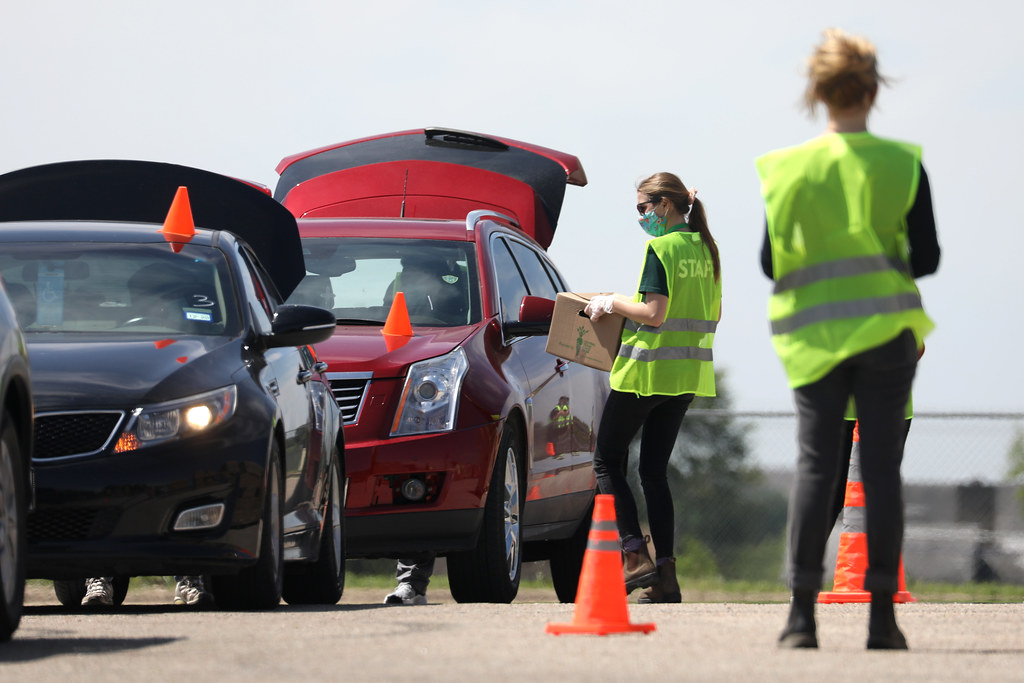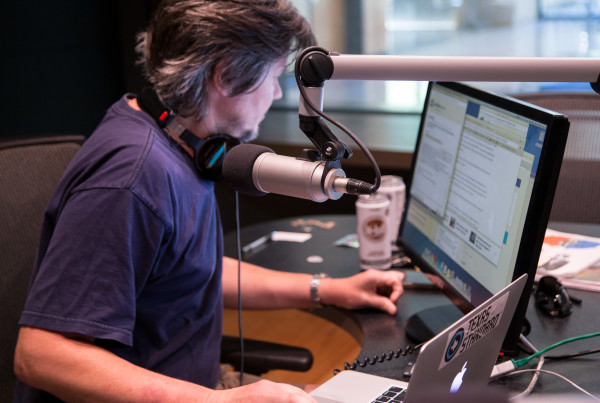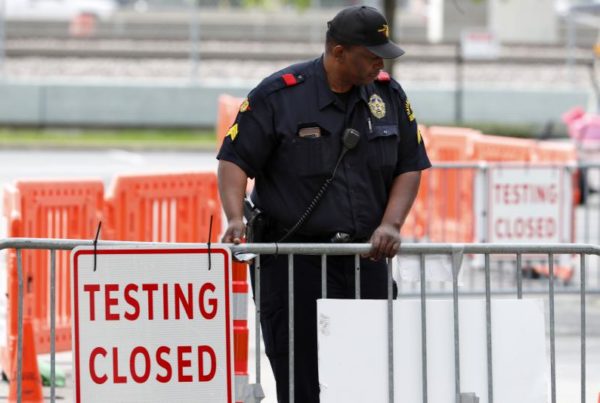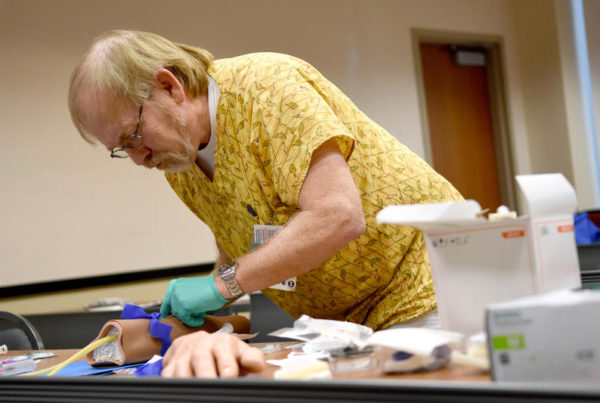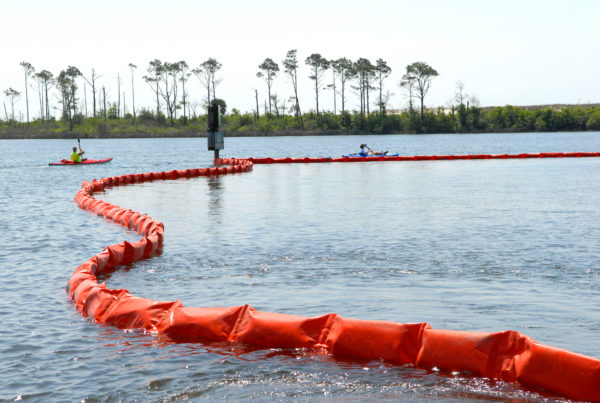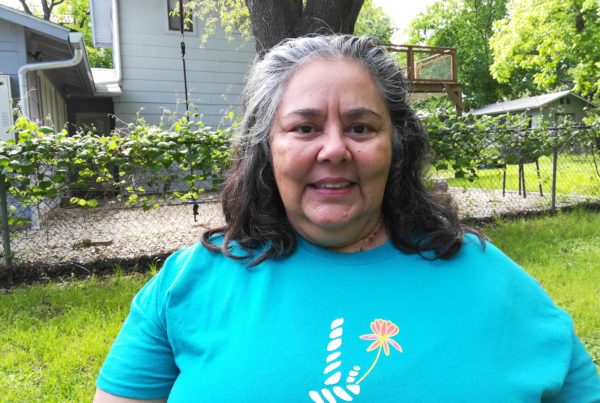With so many Texans out of work because of COVID-19 stay-at-home orders, food banks are the state’s newest first-responders. And the soaring demand is pushing Texas food banks to the limit as they too wait for sorely-needed state and federal aid to arrive.
When stay-at-home orders were issued across Texas late last month, food banks knew they would play some sort of key role for those about to lose their jobs. They didn’t know then how quickly their role would grow, seemingly overnight.
“We’ve never seen anything like it,” said Cecilia Cole, chief executive officer for Feeding Texas. “It’s everywhere. Hitting every single county of the state. It’s hitting every single state in the nation. It’s impacting communities everywhere.”
According to Cole, the 21 Texas food banks her nonprofit helps run are seeing a whopping 88% rise in clients statewide. Her network of food banks was distributing 50% more food as of a week ago.
“Food banks are doing what they do best. They’re nimble. They’re creative. They’re able to shift resources quickly and I’m really proud of the work they’re doing, and how they’re doing it,” Cole said. “But I am hearing across the state they could run out of food and not be able to keep up.”
These 21 food banks also work to serve a network of thousands of food pantries, soup kitchens, churches and community centers that give food to those in need. These smaller partners are running out of food. Cole said it’s estimated some 30% have closed their doors more.
“West Texas is another example of a food bank that’s been hit hard,” Cole explained. “They got doubly hit because they got hit by the crash in oil and gas prices at the same time. That’s another area of the state that’s very rural with big distances between distribution sites. Loss of agency partners. Lots of volunteers dropping out.”
Cole and her team have been trying to get federal or state aid to provide a lifeline for Texas food banks. Stimulus packages approved by Congress and the president back in late March cleared $72 million of emergency funding to go to Texas food banks during the COVID-19 pandemic. But that money isn’t expected to be distributed until July.
“We’ve been super panicked,” said San Antonio Food Bank president and CEO, Eric Cooper. “Our community has been rallying and lots of corporations, foundations and individuals all giving financially to help us close that gap.”
But at this rate, Cooper said his food bank can’t just depend on philanthropy to “fill in” the gap between available resources and the number of people looking for food assistance during the pandemic. Cooper, along with the West Texas, Houston and North Texas food banks put in requests for state aid in early April through Texas’ Department of Emergency Management – or TDEM. Cooper says he requested up to $12 million in aid.
“Together we were just trying to inform the governor on really what was happening in Texas cities and just the fact that Texans aren’t working,” Cooper said. “Many of them, their last paycheck dollars were being spent and now these families don’t have food.”
Before the stay-at-home orders, San Antonio’s food bank served about 60,000 people each week in 16 counties. Now that number has doubled to 120,000 and includes many first-timers. According to Cooper, 70% of the people who have been showing up, including laid-off service workers, haven’t had food assistance before.
Cooper and several other food banks were told by the state late last week that instead of the money they were seeking, Texas will work to get 44 million pounds of food from the Federal Emergency Management Agency. Cooper is expecting his food bank to get 12-percent of that food.
“It’s the extra 60,000 people we’re feeding that this extra food will go a long way in making sure all 120,000 people we’re feeding each week will get access to healthy food,” Cooper said.
A state spokesperson told the Texas Standard that 44 million pounds won’t come all at once. It’s a 90-day projection of need for Texas food banks. FEMA limits state food bank requests to only a 30-day supply of food at a time. So, for now, the state is seeking 14 million pounds to get food banks through the next month.
Celia Cole with Feeding Texas says she’s grateful for these requests for aid. But it’s still not clear when the food will arrive at food banks and just how long it will last under this increased demand.
“It’s not going to meet all of the need,” Cole said. “We’ll continue to push for additional food and resources to ensure we can serve the people who need our help right now.”
Meanwhile, Cole wants Texas to loosen some of its eligibility requirements under the State Nutritional Assistance Program benefits – or SNAP. Rachel Cooper is a senior policy analyst at the left-leaning Center for Public Policy Priorities. She said a major barrier for Texans trying to access SNAP benefits right now is their eligibility is still based on how much their car is worth or if they have a savings account. Cooper also thinks Texas families with children who typically receive free or reduced lunches at school should be given that money.
“Congress [during the pandemic] authorized that every child who would normally get free or reduced school meals can now get the value of those meals put on a debit card and sent out to families,” Cooper said. “Texas hasn’t gotten that piece figured out yet, but we’re hoping they move quickly to implement that program.”
State health officials say they’re waiting for the U.S. Department of Agriculture to approve their plan to do just that. Celia Cole at Feeding Texas hopes these changes to food assistance programs in Texas comes soon, giving food banks some relief.
If you found the reporting above valuable, please consider making a donation to support it here. Your gift helps pay for everything you find on texasstandard.org and KUT.org. Thanks for donating today.


